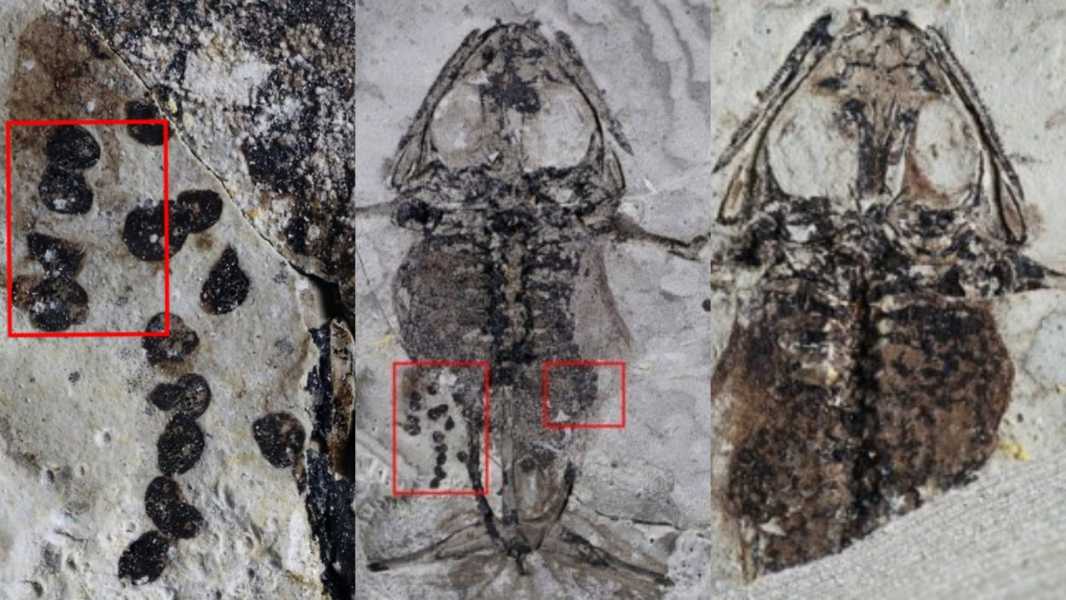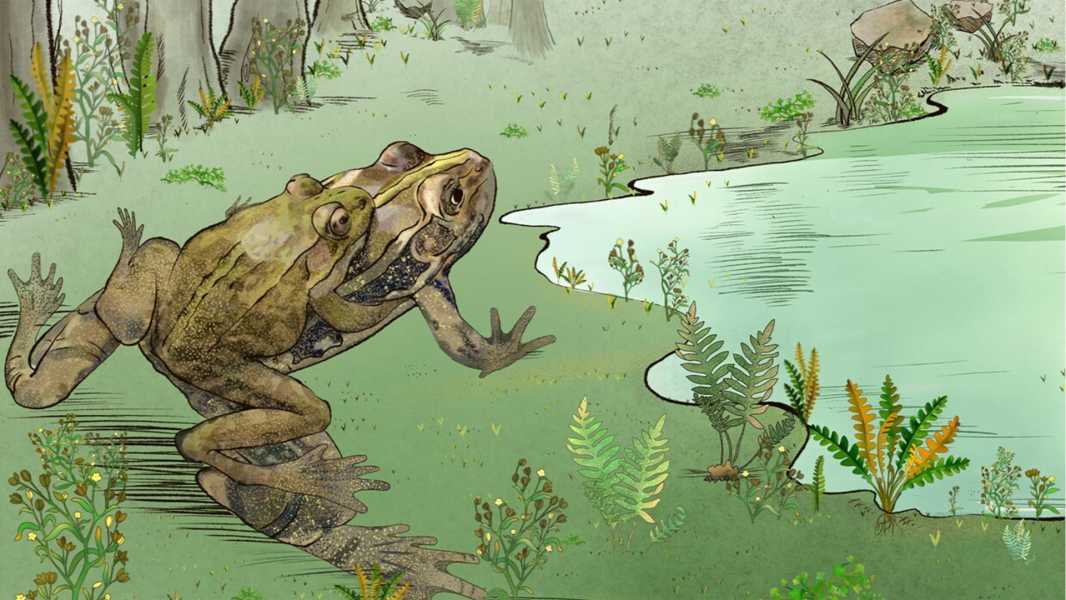
The pregnant frog was found in China and lived 100 million years ago, during the age of dinosaurs. (Photo credit: Baoxia Du et al/Royal Society B: Biological Sciences)
Scientists have discovered the fossil of a frog that lived alongside dinosaurs 100 million years ago with a belly full of eggs. It is the oldest frog of its type ever recorded.
The researchers suggest that the frog probably died during mating, when the male may have drowned the female by grabbing her.
Frogs cannot be pregnant. Instead, female frogs produce a batch of eggs that they are ready to lay while in what is called a “pregnant” state. The eggs are eventually laid and fertilized by the male.
The pregnant frog, Gansubatrachus qilianensis, was found in a fossil bed in northwest China and dates back to the Cretaceous Period (145 million to 66 million years ago), researchers reported in a paper published Feb. 6 in the journal Royal Society B: Biological Sciences.
Fossils of frogs from this period are extremely rare, and those with preserved soft tissue are even rarer. This specimen is even more unique because it represents the earliest documented find of a pregnant frog, the researchers noted.
The scientists compared the fossilized pregnant frog to other previously found specimens. They created a high-resolution model of its skeleton using computed tomography (CT) scans of the fossils and analyzed the composition of its eggs using X-rays.
Their study showed that the frog was still skeletally immature, indicating that it may have reproduced before it was fully developed. Although this is common among many modern animals, there was no direct fossil evidence of this happening in ancient frogs and toads.
“The evolution of reproduction, especially reproductive strategies, is a very important part of biological evolution,” lead study author Baoxia Du, a paleontologist at Lanzhou University in China, told Live Science.

An artistic depiction of the life of frogs in the Cretaceous period.
He added that understanding the reproductive strategies used by ancient frogs could provide valuable information about their full reproductive history.
Because the frog's skeleton was immature, the researchers ruled out old age as a cause of its death. External factors, such as sudden changes in water conditions or algal blooms, were also unlikely, as evidence of these would have been evident in the sediments studied, Du said.
Only a few other frog fossils were found in the deposits, suggesting
Sourse: www.livescience.com





